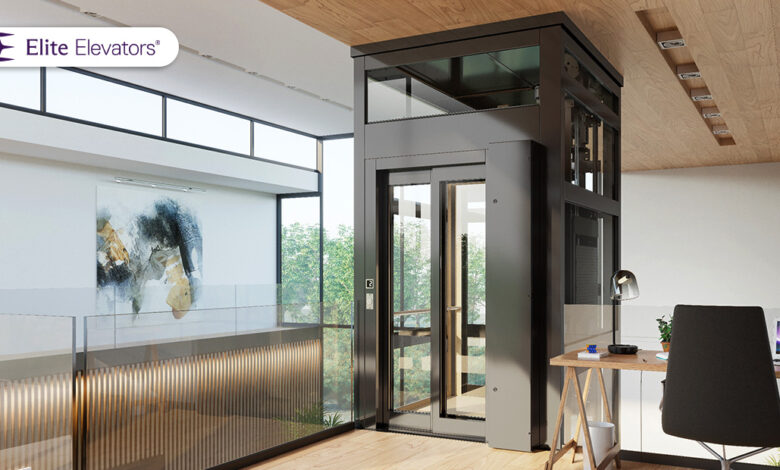Top 5 Factors That Affect Home Lifts Price in 2025

When it comes to installing a home lift, many homeowners focus primarily on two things: cost and value. After all, while a home lift is a great addition to enhance comfort and accessibility, it is also a significant investment. As we move into 2025, it’s important to understand the key factors that impact the price of a home lift, ensuring that you make an informed decision when purchasing one.
The home lift price can vary greatly depending on a number of factors, including the type of lift, installation requirements, and the home’s specific layout. If you are considering installing a home lift in 2025, understanding these factors will help you navigate the purchasing process and help you choose the best option for your needs and budget. In this blog, we will discuss the top five factors that affect home lift prices in 2025.
- Type of Home Lift
The type of home lift you choose is perhaps the most significant factor influencing the overall price. Home lifts come in various styles and designs, each offering different features and benefits. The two main categories of home lifts are:
- Hydraulic Lifts: These lifts are powered by hydraulic fluid and are known for their smooth operation and reliability. They are typically used in larger homes with multiple floors. Hydraulic lifts are often more expensive due to the advanced technology and the need for a pit (a small excavation at the base of the lift) for installation.
- Electric/Traction Lifts: These lifts are powered by an electric motor and a system of pulleys and cables. Electric lifts tend to be more cost-effective than hydraulic lifts and are ideal for smaller homes or those with limited space. They don’t require a pit, making them easier and less expensive to install.
- Pneumatic Lifts: A newer innovation in the market, pneumatic lifts use air pressure to move the cabin. They offer a sleek, modern design but tend to be more expensive due to the cutting-edge technology involved.
The type of lift you choose will largely determine your initial installation costs, as hydraulic lifts, for example, require more complex installation and additional infrastructure like a pit or a machine room. Electric and pneumatic models, on the other hand, can be more straightforward and cost-efficient to install.
- Home Layout and Structure
The layout and structure of your home is another critical factor in determining the cost of a home lift. Factors like the number of floors, stair configuration, available space, and architectural design can all impact the installation price. Here’s how:
- Staircase Configuration: The type of staircase in your home (e.g., straight, curved, or spiral) plays a huge role in pricing. Curved staircases are more challenging to navigate for a lift system because the tracks must be custom-designed to fit the unique curves. As a result, curved lifts typically cost more due to the complexity of both design and installation.
- Number of Floors: The more floors your home has, the more expensive the installation will be. A lift that needs to travel between multiple levels requires longer tracks, more advanced mechanisms, and additional support structures, which contribute to the increased cost. Homes with basements or attic levels that require vertical travel can see a significant price increase compared to homes with just two levels.
- Space Limitations: If your home has a narrow staircase or limited space for the lift, the design and installation may require additional customization, which can add to the cost. In some cases, a lift might need to be designed to fit into a tight area, requiring custom tracks and features.
Working with an experienced home lift provider is essential to assess your home’s structure and layout. They will be able to determine the most appropriate type of lift and provide a clear cost breakdown based on the specifics of your home.
- Lift Features and Customization
Home lifts today come with a wide range of features and customization options that can significantly impact the final price. While basic models are more affordable, more advanced features and design elements will naturally increase the cost. Some of the most common features that can affect the price include:
- Weight Capacity: If you need a lift that can carry heavy loads (such as multiple people or bulky furniture), the price will increase. Higher capacity lifts require stronger motors, sturdier tracks, and more robust materials, which raise the overall cost.
- Interior Design and Materials: Many home lifts offer customizable interiors, including options for upholstery, flooring, lighting, and wall panels. For a more luxurious look, you may opt for premium materials like hardwood floors, glass panels, or leather seats, all of which will add to the overall price of the lift.
- Advanced Control Systems: Modern lifts come with high-tech control systems, including smart features like remote control operation, automatic stops, and intuitive touch screens. Some lifts are even integrated with home automation systems for seamless control, but these features come at a premium.
- Safety Features: A wide range of safety features is available, such as emergency stop buttons, backup power systems, and sensors to prevent the lift from moving if something is blocking its path. While these features are important for overall safety, they can also add to the cost.
The more features and customization you choose, the higher the price will be. It’s essential to prioritize which features are important for your needs and budget. Keep in mind that while customization can make your lift more attractive, it can also significantly increase the total cost.
- Installation Complexity
The complexity of the installation process is another important factor that affects the overall price of a home lift. The installation process for home lifts typically involves several steps, including:
- Preparing the Site: Depending on your home’s layout, the site where the lift will be installed may need to be prepared. This can involve creating space for the lift shaft, installing support beams, or modifying your existing staircase. If your home requires significant structural adjustments, the installation costs can rise substantially.
- Wiring and Electrical Work: Home lifts require electrical wiring for their operation, especially for traction and pneumatic models. Depending on the complexity of the electrical work and the proximity of your home’s power sources, the cost can increase. If your home does not have the necessary wiring in place, additional electrical work may be required, adding to the cost.
- Construction Permits and Inspections: In some regions, installing a home lift requires building permits, inspections, and adherence to local building codes. These requirements can vary depending on the type of lift and your location. Be sure to budget for the associated costs, which can include application fees, inspections, and possible modifications to your home’s structure.
- Brand and Manufacturer
Finally, the brand and manufacturer of the home lift you choose can significantly affect the price. There are many different manufacturers in the market, and they offer varying price points based on factors like:
- Brand Reputation: Established, high-quality brands tend to have higher prices due to their reputation for reliability, safety, and durability. These brands often offer longer warranties and superior customer support, which can be valuable in the long run.
- Warranty and After-Sales Support: A reputable brand will often include a comprehensive warranty with their lifts, which can help offset future maintenance or repair costs. However, this may increase the upfront price. On the other hand, lesser-known brands may offer lower initial prices but might not come with the same level of after-sales support or warranty.
- Quality and Technology: Higher-end brands often incorporate more advanced technology, safety features, and superior materials into their lifts, which can drive up the cost. While the price might be higher, these lifts typically offer better performance and longer lifespans, making them a wise investment for the future.
It’s important to balance price with quality when selecting a manufacturer. Sometimes opting for a well-known, trusted brand can save you money in the long run by avoiding potential issues related to durability or customer support.
Conclusion
As you can see, there are several factors that affect the price of a home lift in 2025. From the type of lift to the complexity of installation, home layout, and added features, each element plays a role in determining the final cost of the lift.
While home lifts can be a significant investment, they offer a wealth of benefits, including enhanced accessibility, convenience, and increased home value. By understanding the factors that influence home lift prices, you can make a more informed decision and find a solution that meets both your needs and your budget.
Before making a purchase, it’s always a good idea to consult with a professional who can assess your home and provide a tailored quote based on your unique requirements. With the right knowledge and planning, you can ensure that your home lift installation is a smart, long-term investment.

